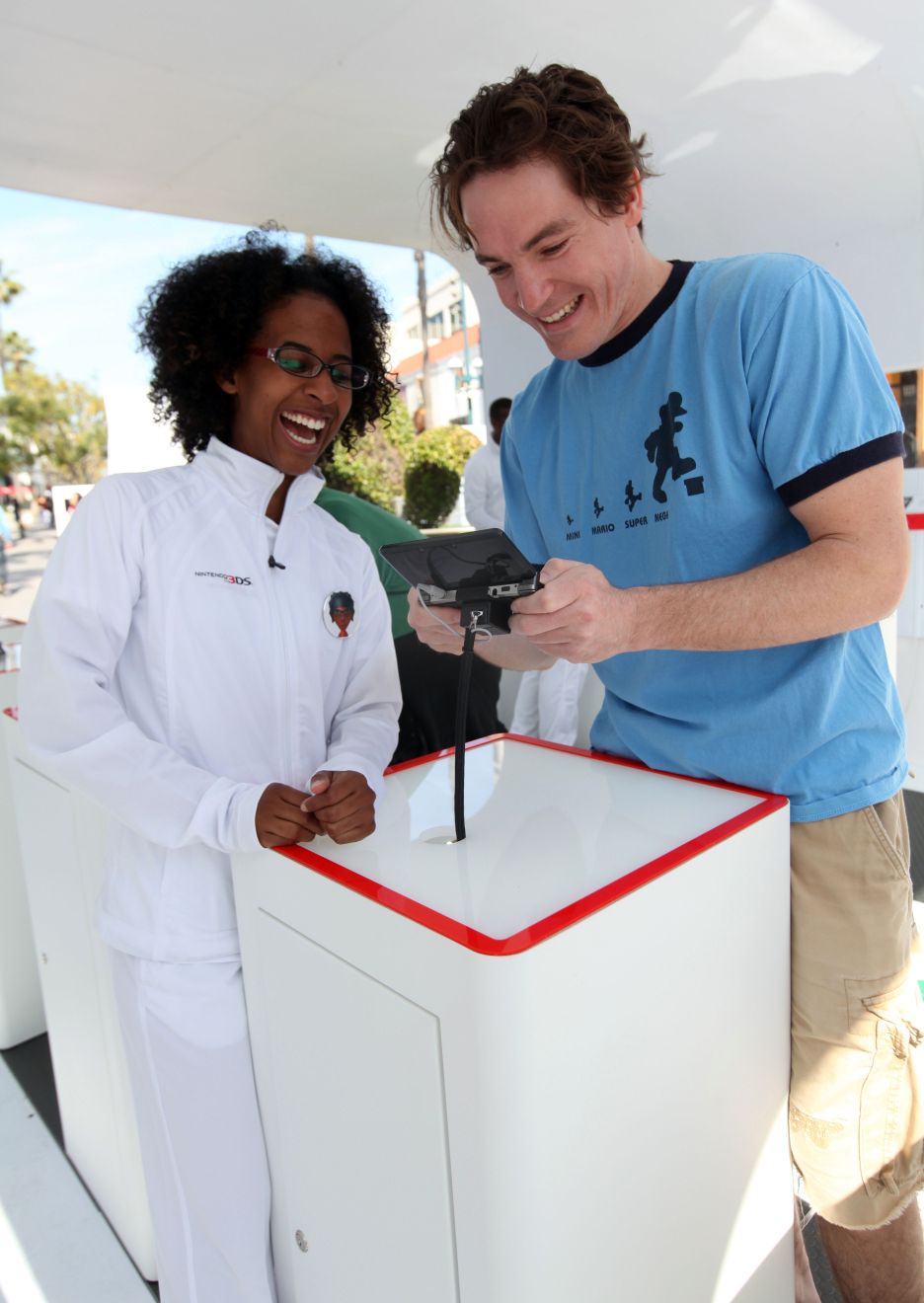 “Warning: The Virtual Boy is intended for use by persons 7 years or older. Failure to comply may result in permanent eye injury.”
“Warning: The Virtual Boy is intended for use by persons 7 years or older. Failure to comply may result in permanent eye injury.”
With these words in the Virtual Boy’s instruction manual, Nintendo may have covered its legal bases, but it also contributed to the death of one of its earliest crazy-slash-innovative stories. After all, the Virtual Boy looked crazy enough, what with its being a pair of goggles on a tripod, and certainly trapped people in an antisocial setting (not many people can fit into one goggle)– but add to that the idea that Nintendo’s gadget could kill the eyes of youngsters, and it’s a wonder how anyone thought Virtual Boy could survive in the first place. Here was a system that had a setting to pause a game automatically every fifteen to thirty minutes so that players could take a break. Certainly the precursor to the kind of “commercial break” Wii Sports would include– but for very different reasons.
Now, Nintendo’s released its second official foray into glasses-free 3-D, and the same worries have once again arisen. Gizmodo reported the possibility of the 3DS “destroy[ing] children’s eyeballs”; certain other outlets expanded that into all “games ruin[ing] childrens’ eyes”. And while these safety warnings– ocular or otherwise– have been included on the back side of every Nintendo console’s hardware manual (check out the Nintendo DSi’s Health and Safety Precautions and you’ll see what we mean), this particular warning seems more ominous than most. And while you’re probably not a child if you’re reading this, let’s, er, look into the problem anyway.
(Though really, Nintendo’s come a long way since the Virtual Boy– Levi Buchanan and Craig Harris list just a couple reasons why we shouldn’t be worried about the 3DS as we did the Virtual Boy– and the 3DS will probably sell like extra-delicious hotcakes anyway, despite eye-related worries. But let’s just check these out anyway, because we’re nice like that.)

Players test out the 3DS during Nintendo’s demo tour in Santa Monica, CA, USA.
Let’s start with the claims. According to Nintendo of Japan’s website, children six years old and younger should be wary of playing games in 3-D on the Nintendo 3DS– though it did not provide any medical details as to just why they should be careful. However, far from being intentionally deterrent to sales, this warning, according to an interview with NOJ President Satoru Iwata by the Wall Street Journal, was “meant to be a precautionary measure to inform customers,” though Iwata apparently “did not deny the view that concerns over possible litigation was one of the factors behind the warning.” At the same time, the American branch’s senior director for corporate communications, Charlie Scibetta, told reporters that the upstanding parent would use parental features to limit use of 3-D on 3DS consoles, further cementing the idea that Nintendo’s just covering their proverbial behinds.
Eye doctors, moreover, seem unimpressed with Nintendo’s ocular claims, according to the New York Times. Dr. Lawrence Tychsen in particular, who studies the impact of 3-D imagery in monkey eye development, says that “3-D in a theater or a video game should have zero deleterious impact whatsoever”; though meanwhile, Professor Martin Banks of University of California-Berkeley studied the impact of 3-D displays– that is, non-3DS, 3-D screens– and argues that outlets employing 3-D “poorly” could cause headaches, disorientation and fatigue, though not for a specific age group. Suffice to say that despite the health warnings issued by Nintendo, ever since the success of 3-D films like Avatar, worries have popped up all over. We’ve reached the point, in fact, where the Wall Street Journal reports (in the aforementioned article) that Panasonic is busy at work with the Japanese government to create “an international set of rules” as to how 3-D images can be shown without bodily harm.
While it seems clear that 3-D, and the 3DS by extension, still has places to go in terms of medical warnings, considering the arguments set forth by ophthalmologists and other eye-related professionals, parents and children alike should have nothing to worry about. That is, unless Banks is correct in his assumptions, in which case we’ll have to worry if companies decide to do 3-D “wrong”– though unlike the Virtual Boy, players will always have the option to turn 3-D off on their 3DS systems. Nintendo, for its part, seems to have taken the lessons learned by the Virtual Boy to heart. That little pair of walking goggles seems like it’ll turn out to be a stepping stone to success.




 ShareThis
ShareThis






